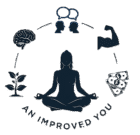In our hyper-connected world, it’s easy to feel overwhelmed by endless notifications, deadlines, and to-do lists. Yet, amidst the chaos, one simple practice stands out for its power to boost productivity and increase happiness: mindfulness meditation. By training your mind to focus on the present moment, you can unlock deep mental clarity, reduce stress, and cultivate habits that support both your work performance and overall well-being. In this article, you’ll discover the top meditation benefits, explore mindful focus techniques, and learn how to weave mindfulness into your daily routine to transform your productivity and joy from the inside out.
Understanding Mindfulness Meditation
Mindfulness meditation is more than just sitting quietly; it’s a structured practice that cultivates awareness of your thoughts, emotions, and bodily sensations without judgment. The core idea is simple: pay attention to the present moment with curiosity and compassion. Over time, this practice strengthens your ability to notice when your mind drifts, gently guide it back, and focus on what truly matters.
Most people think meditation means emptying the mind completely, but in mindfulness meditation, the goal isn’t to eliminate thoughts—it’s to observe them without attachment. You can practice mindfulness informally by tuning into your senses during everyday activities like eating or walking. Formal sessions typically involve a timed sit where you focus on breath, body sensations, or a guided visualization.
The Science Behind the Practice
Research has shown that regular mindfulness meditation can rewire your brain’s neural pathways, improving areas responsible for attention and emotional regulation. Studies using MRI scans reveal increased gray matter in regions linked to learning and memory, as well as reduced activity in the amygdala—the brain’s fear center—resulting in a calmer, more focused mind.
Key takeaways:
- Consistent practice alters brain structure for enhanced concentration.
- Mindfulness reduces stress hormones like cortisol.
- Emotional resilience is strengthened through non-reactive observation.
5 Meditation Benefits for Productivity and Happiness
Incorporating mindfulness meditation into your routine offers a wealth of advantages. Below are five meditation benefitsthat directly contribute to better work performance and a higher sense of well-being.
- Enhanced Focus and Concentration
- Practicing mindful focus techniques trains your attention “muscle.”
- You’ll find it easier to tackle tasks without succumbing to distractions like social media.
- This improved concentration helps you complete projects more efficiently.
- Reduced Stress and Anxiety
- Meditation encourages deep breathing and relaxation, which lowers stress hormones.
- A calmer nervous system translates to fewer feelings of overwhelm, allowing you to think clearly under pressure.
- Improved Emotional Balance
- By observing your emotions without judgment, you can respond thoughtfully rather than react impulsively.
- This emotional regulation supports positive workplace relationships and decision-making.
- Greater Creativity and Problem-Solving
- Quieting the mental chatter creates mental space for new ideas to emerge.
- Regular meditation can spark creative solutions, helping you overcome challenges with fresh perspectives.
- Increased Happiness and Well-Being
- Mindfulness meditation fosters gratitude and contentment.
- Over time, you’ll notice a lasting boost in your mood and sense of fulfillment.
Combined, these meditation benefits create a positive feedback loop. As stress decreases and focus sharpens, you’ll naturally develop greater confidence and a deeper sense of purpose, further amplifying your productivity and happiness.
Mindful Focus Techniques to Boost Productivity
To truly boost productivity through meditation, you need practical strategies. Here are three mindful focus techniquesyou can integrate into your workday to maintain laser-sharp attention and avoid burnout.
1. The “Single-Task Sprint”
How it works:
- Choose a single task and set a timer for 25 minutes.
- Close all unrelated tabs and eliminate potential distractions (phone on silent, notifications off).
- During the sprint, whenever your mind wanders, gently bring your focus back to the task.
Why it helps:
- Mimics the Pomodoro Technique with a mindfulness twist.
- Strengthens your ability to notice distractions and redirect attention.
- Frequent breaks between sprints preserve mental energy.
2. Breathe and Reset
How it works:
- At regular intervals (e.g., every hour), pause your work and take three rounds of deep, mindful breaths.
- Inhale slowly through your nose for a count of four, hold for two, and exhale through your mouth for six.
Why it helps:
- Resets the stress response and clears mental clutter.
- Serves as a moment of self-check-in, allowing you to adjust your mindset.
- Simple, quick, and can be done anywhere—at your desk or during a break.
3. Visualization Anchoring
How it works:
- Before starting a project, close your eyes and visualize three success milestones: “I’ll research thoroughly,” “I’ll draft efficiently,” “I’ll review with clarity.”
- Picture yourself completing each step calmly and confidently.
Why it helps:
- Creates a mental roadmap and primes your brain for focused action.
- Builds motivation and reduces anxiety about complex tasks.
- Reinforces positive expectations.
How Mindfulness Meditation Can Increase Happiness
Beyond productivity, mindfulness meditation is a powerful tool for nurturing lasting happiness. Here’s how adopting a consistent practice can transform your emotional landscape.
Cultivating Gratitude
By observing each moment non-judgmentally, you become more attuned to life’s small joys—a warm cup of tea, the sunlight streaming through a window, or the sound of laughter. Journaling with a gratitude focus after your meditation can amplify these feelings, helping you start or end your day with a positive mindset.
Reducing Rumination
One of the most harmful habits for mental health is rumination—dwelling on past mistakes or worrying about the future. Mindfulness meditation trains you to anchor your awareness in the present, breaking the cycle of unhelpful thoughts that drain your happiness.
Enhancing Self-Compassion
Through mindful self-observation, you learn to treat yourself with the same kindness and understanding you’d offer a friend. This shift toward self-compassion reduces self-criticism and builds emotional resilience, contributing to lasting well-being.
Strengthening Relationships
Happier people tend to have stronger social connections. By becoming more present and empathetic—core aspects of mindfulness meditation—you can listen more deeply, communicate more effectively, and foster more meaningful relationships both at work and in your personal life.
Practical Tips to Start Your Mindfulness Practice
Ready to harness the meditation benefits and boost your workflow? Follow these actionable tips to establish a sustainable mindfulness meditation routine:
- Start Small:
Begin with just 5 minutes a day. Consistency is more important than duration. - Choose a Regular Time:
Block out a specific time each day—morning, lunch break, or before bed—to reinforce the habit. - Find a Comfortable Posture:
Sit upright with your spine tall, either on a chair or cushion. The goal is alert relaxation. - Use Guided Apps:
Apps like Headspace, Calm, or Insight Timer offer structured sessions that teach mindful focus techniques. - Track Your Progress:
Log your sessions in a journal or habit-tracking app to motivate yourself. - Pair Meditation with Daily Activities:
Integrate mindfulness into everyday tasks like walking, eating, or washing dishes—notice sensations, smells, and thoughts. - Create a Dedicated Space:
Designate a quiet, clutter-free spot for meditation to signal your mind it’s time to focus. - Join a Community:
Practice with a meditation group or buddy to stay motivated and share mindful focus techniques.
Overcoming Common Obstacles in Meditation
Implementing a new habit isn’t always smooth sailing. Here are solutions to typical challenges:
- “I Can’t Sit Still”
Try movement-based mindfulness like a short walking meditation or gentle yoga to build tolerance for stillness. - “My Mind Never Stops Chattering”
Remember, noticing your thoughts is part of the practice. Label distractions gently (“thinking,” “planning”) and return to your breath. - “I Forget to Meditate”
Link your practice to an existing habit (e.g., after brushing teeth) or set calendar reminders to nudge you. - “I Don’t See the Point”
Reflect on the meditation benefits you’ve experienced, however small, and revisit your motivation for practicing. - “Striving for Perfection”
If you feel pressure to “do it right,” remember that meditation is about consistency over perfection. Accept each session as it comes.
The Long-Term Impact of a Mindfulness Habit
While short sessions can provide immediate relief, the true power of mindfulness meditation emerges over months and years. A consistent practice rewires your brain for lasting changes: enhanced working memory, more balanced emotions, and a baseline of contentment that persists even amid challenges. Over time, you’ll notice improved empathy, stronger creative insights, and the ability to enter “flow” states—periods of deep, effortless concentration that maximize output. By committing to mindful focus techniques as a daily habit, you build a resilient foundation for both your personal growth and professional success.
Conclusion
Mindfulness meditation offers a proven pathway to both boost productivity and increase happiness. By training your attention with mindful focus techniques and embracing the broader meditation benefits—from reduced stress to enhanced emotional resilience—you can transform not just your work performance, but your entire quality of life. Start small, stay consistent, and watch as moments of quiet awareness build into lasting personal and professional growth. Your journey to greater mental clarity and joy begins with a single breath.



